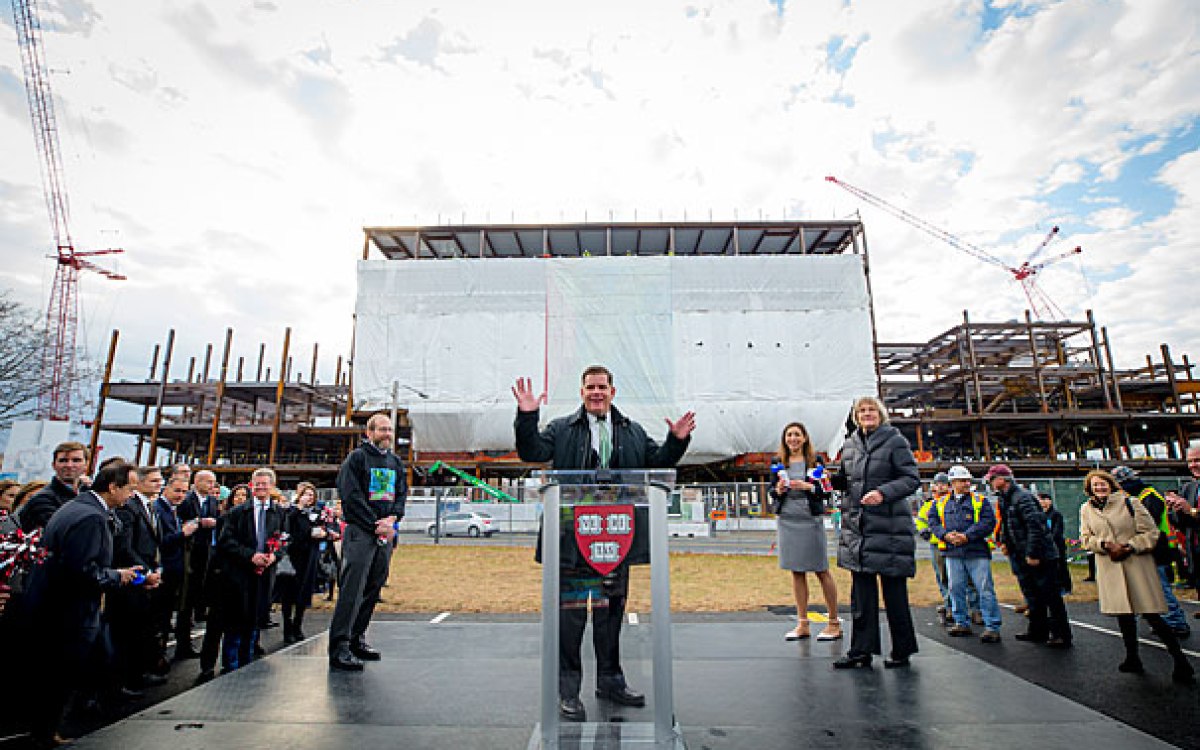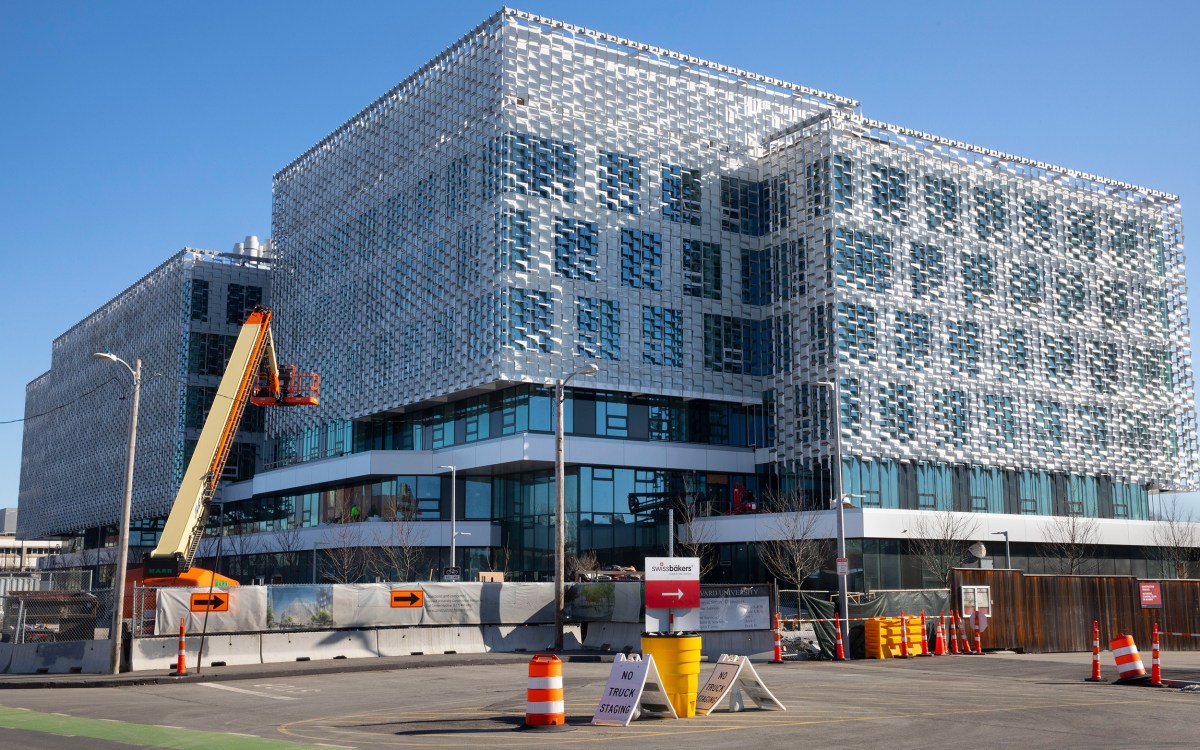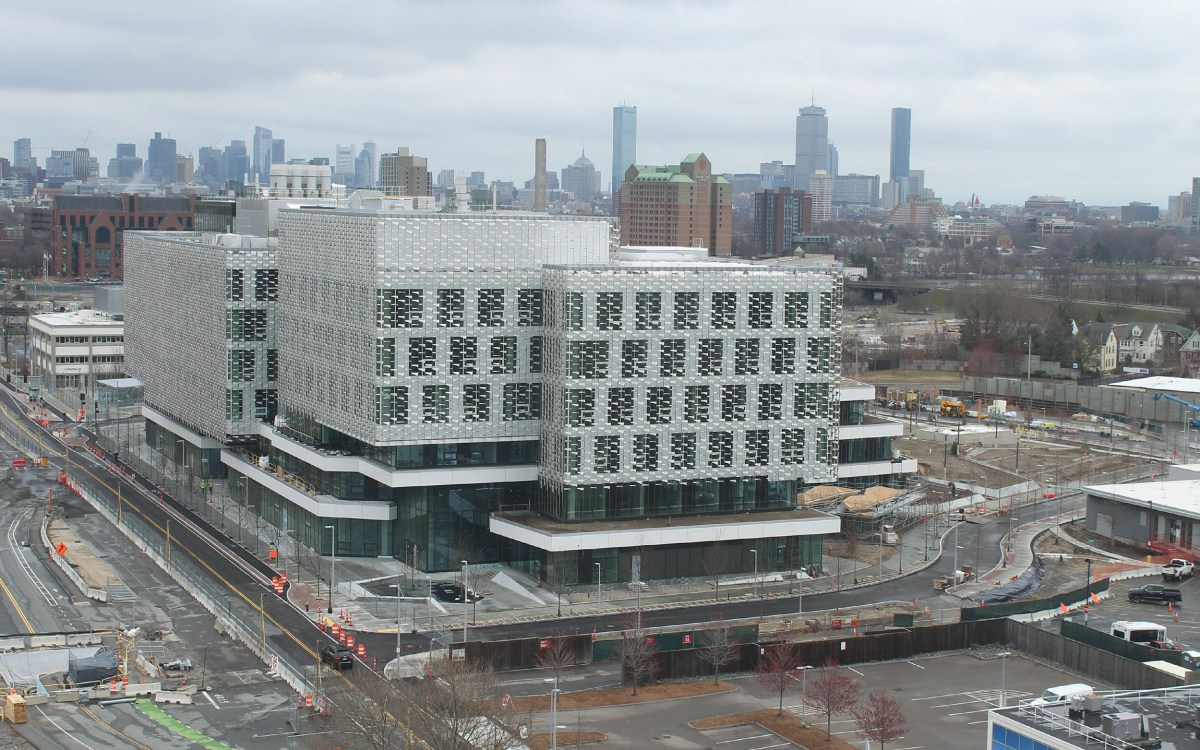Moving into Science and Engineering Complex after pandemic pause
SEAS’ shift to Allston began in November and will continue in coming months
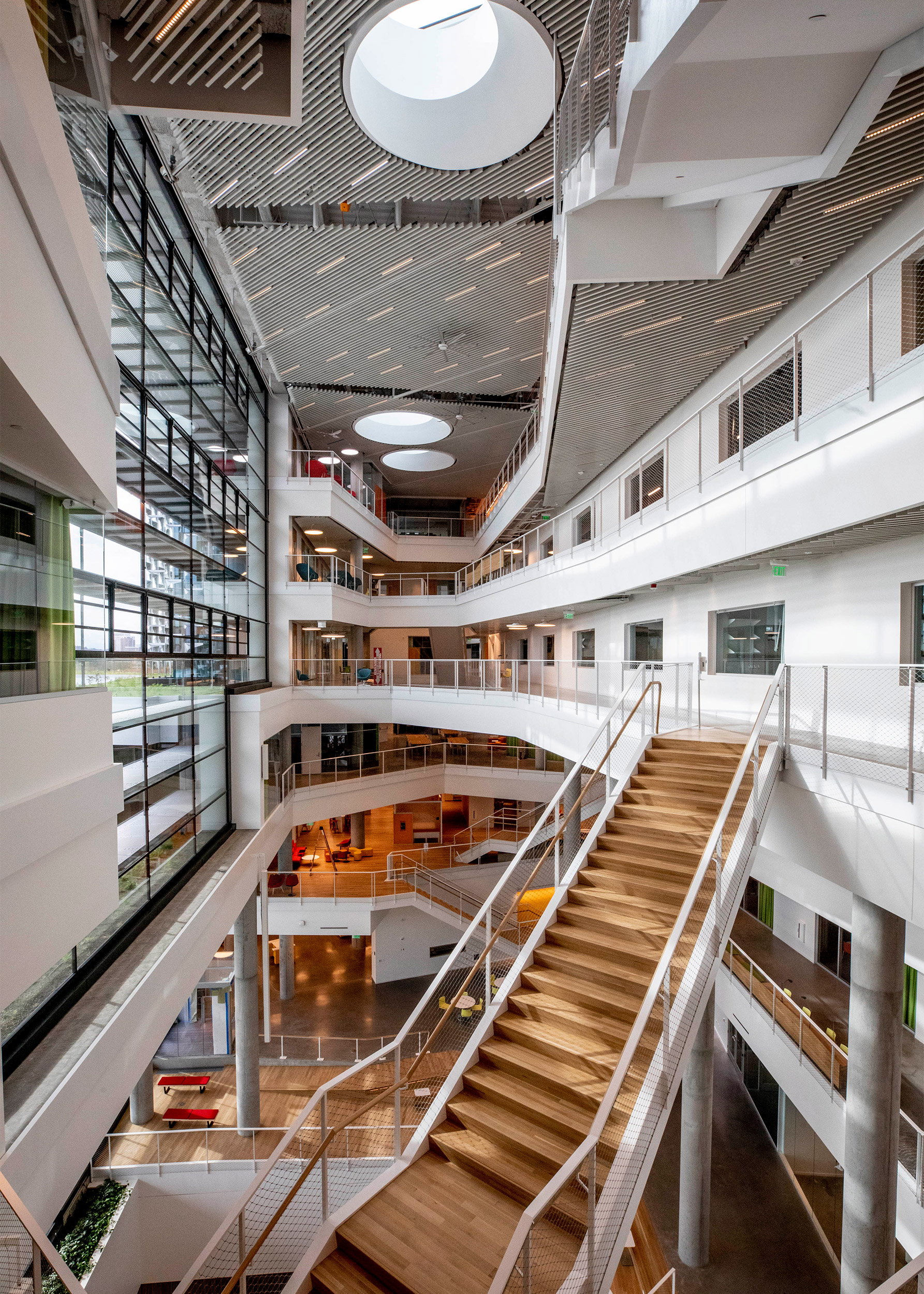
Photos by Rose Lincoln/Harvard Staff Photographer
The John A. Paulson School of Engineering and Applied Sciences (SEAS) is looking cautiously ahead to the post-COVID era and taking initial steps toward the long-anticipated opening of its new Science and Engineering Complex in Allston.
In November, the School started the lengthy and complex process of moving labs from the Cambridge campus to their new home across the Charles River, an effort delayed by a halt in construction last spring after the coronavirus’ abrupt arrival. School leaders said that some labs are now in and operating, albeit at reduced capacity owing to COVID-era occupancy restrictions, and that others will be joining them in the coming weeks.
“Several labs, notably our robotics groups, have already moved from Cambridge and are operational in the SEC under Harvard’s strict COVID protocols,” said SEAS Dean Francis Doyle. “The remaining moves right now include computer science and electrical engineering, to be followed by bioengineering over the winter. A few labs will move into the building during the spring timeframe.”
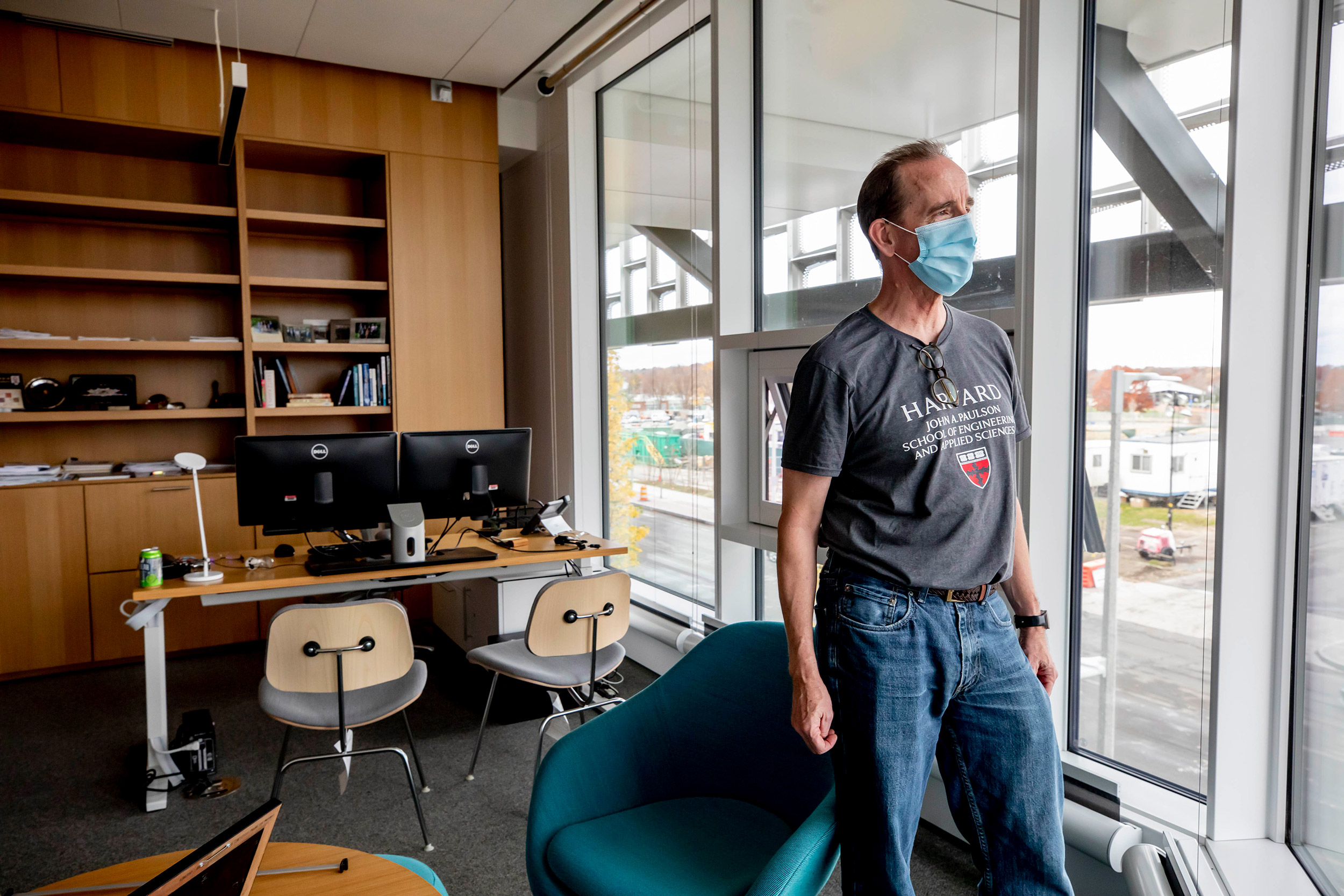
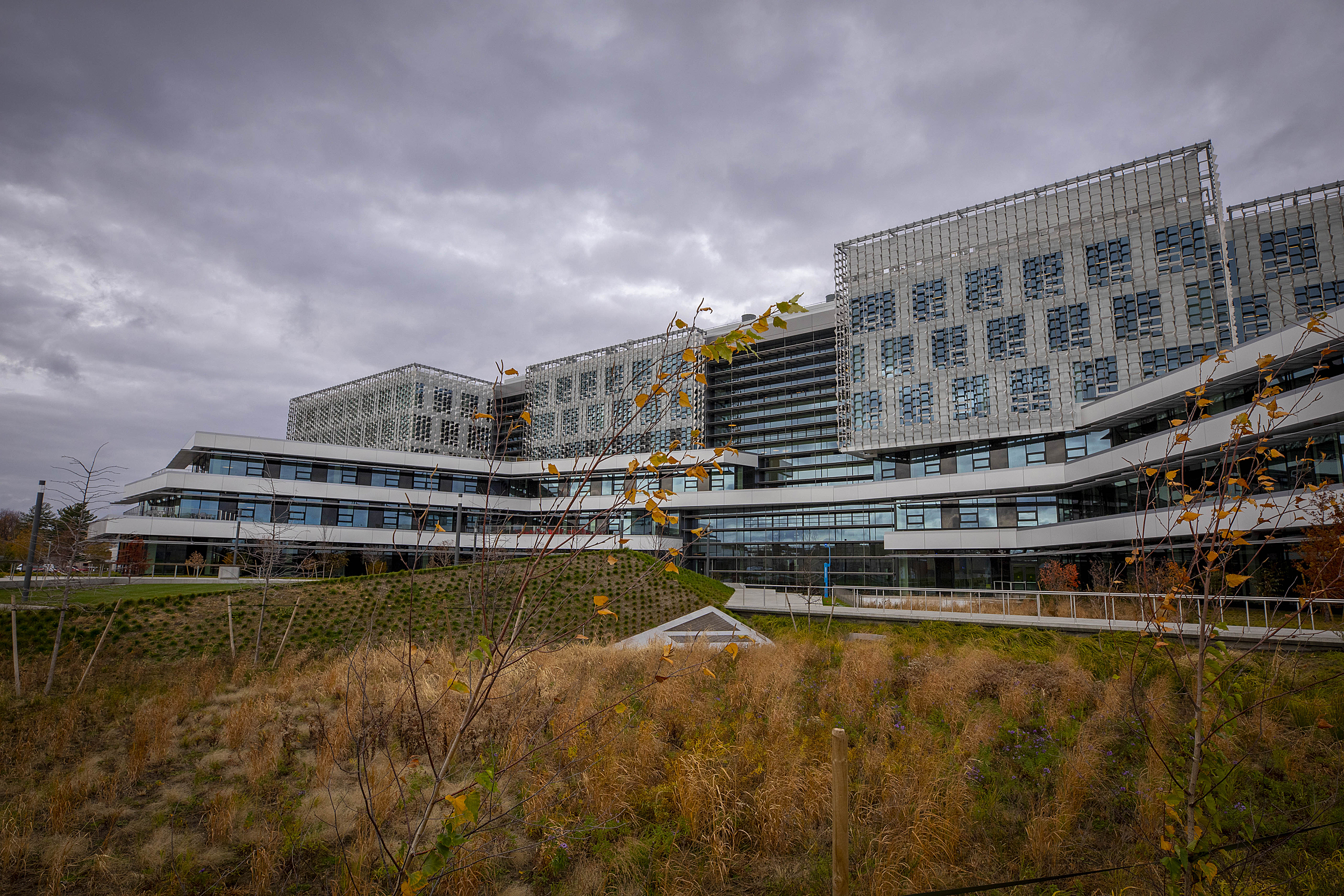
SEAS Dean Francis Doyle moves into his new office at the Science and Engineering Complex in Allston.
Construction on the Western Avenue site of a newly envisioned home for about half of the SEAS faculty began in 2016. Move-in was scheduled to begin last spring, and the building was expected to be to be occupied over the summer.
Instead, the 500,000-square-foot building remains mostly empty. Finishing touches on the construction were slowed by the pandemic, but it is now largely complete and features state-of-the-art classrooms, active learning labs, maker spaces, faculty labs, community space, and a café.
It was designed to foster connections between those who might not normally interact to promote a robust flow of ideas and cross-disciplinary collaborations. Its physical proximity to Harvard Business School, the future Enterprise Research Campus, as well as the Harvard i-lab, the Harvard Launch Lab, the Pagliuca Harvard Life Lab, and the ArtLab are expected to provide opportunities for collaboration, as well as connections with those whose expertise is bringing ideas to life, into production, and out to society. Connections to the community will be fostered through a host of programs at the nearby Harvard Ed Portal. Though the in-person nature of the anticipated encounters has been short-circuited by the pandemic, Doyle said he looks forward to a time when they can again be encouraged — and augmented by the pandemic’s hard-won facility with remote work and learning.
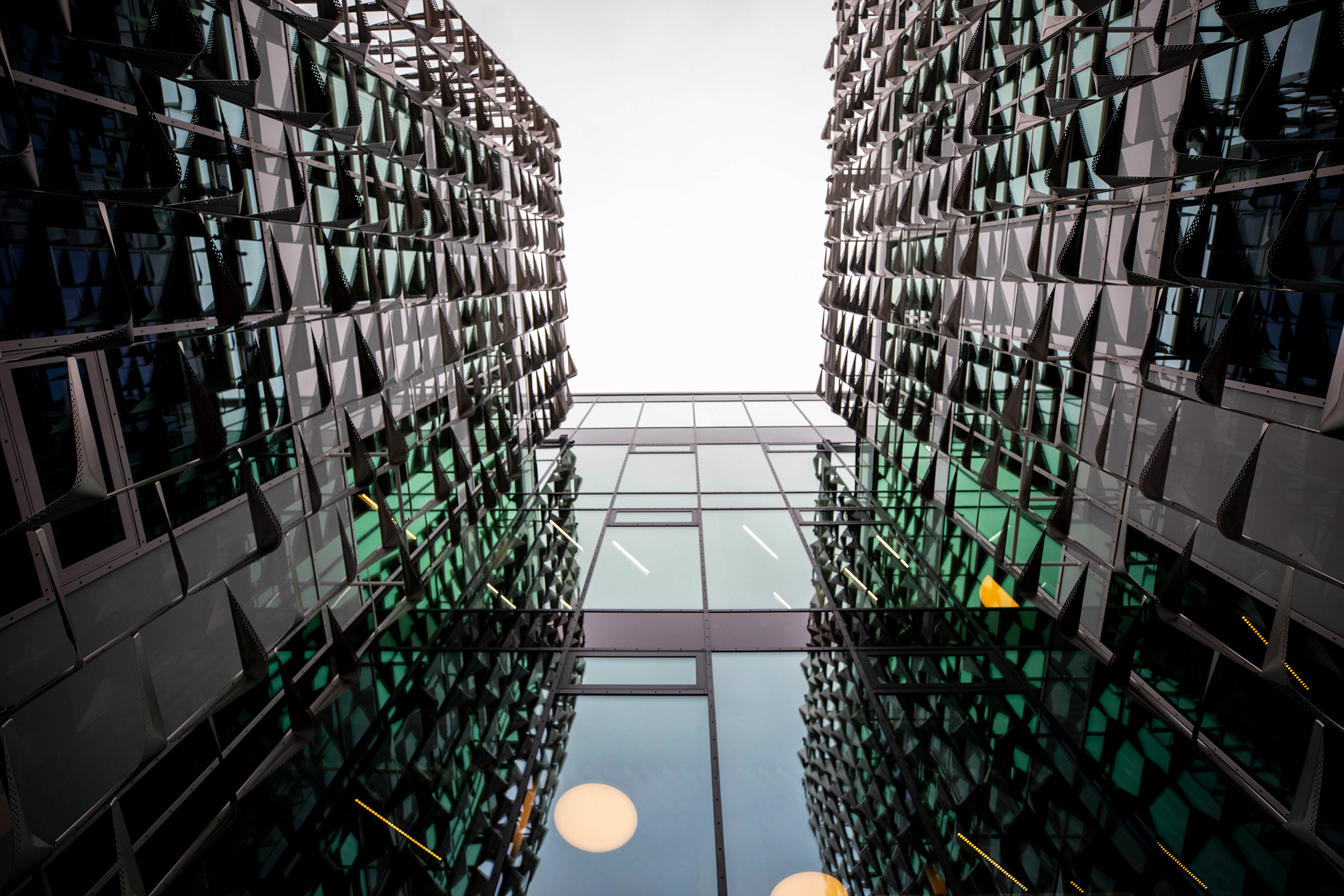
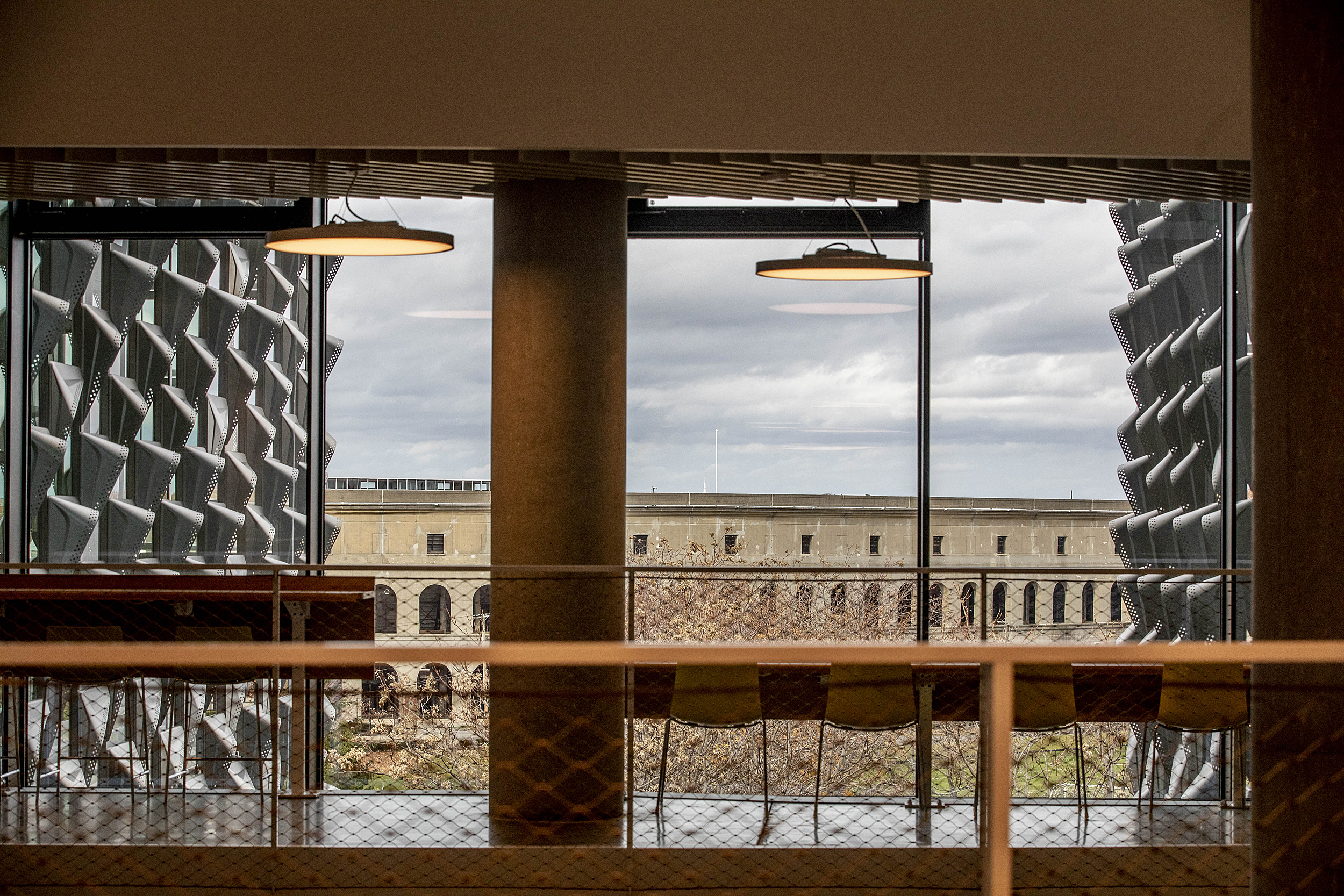
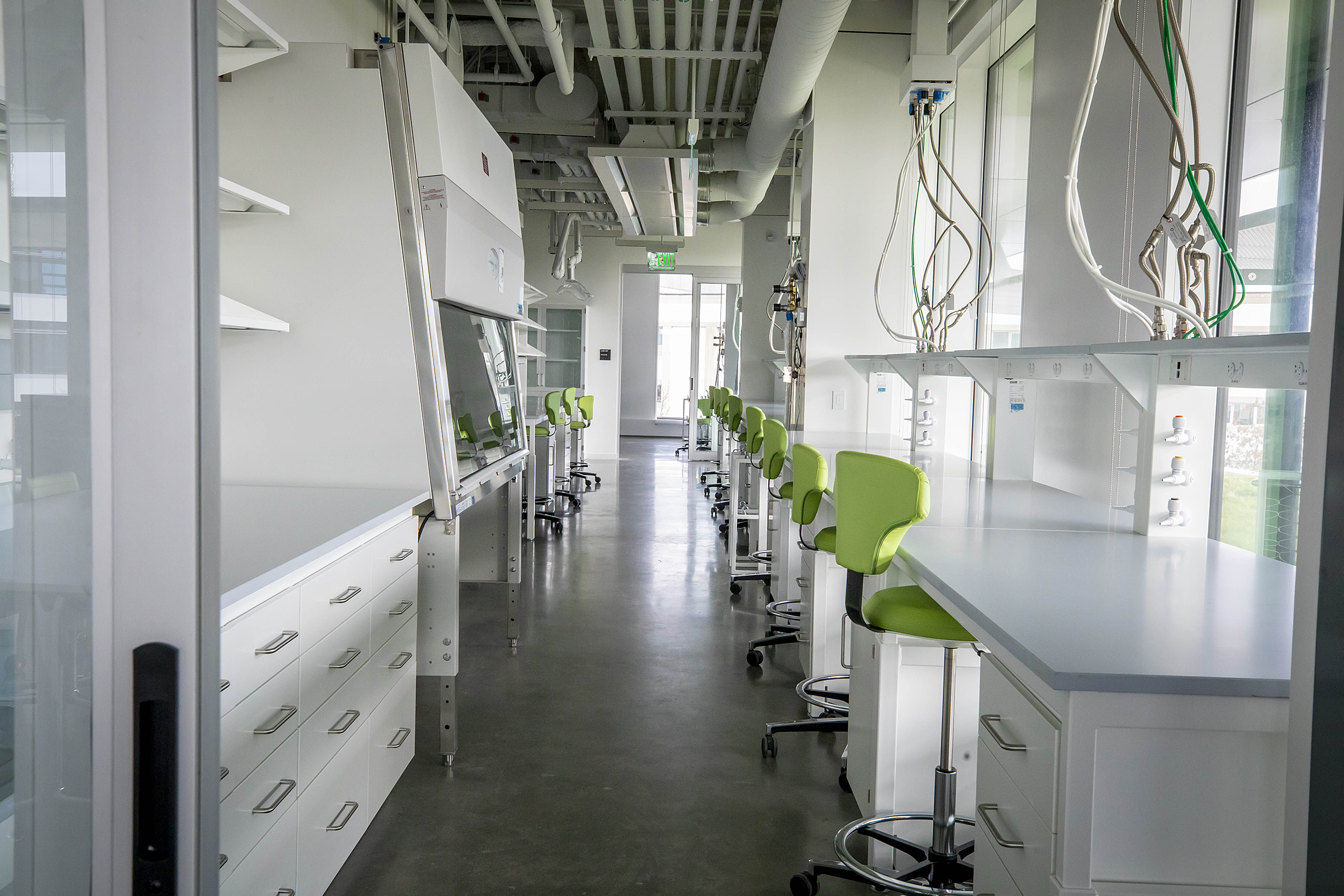
A view of the Harvard Stadium from a study area. One of the science labs in the new Allston complex.
“Throughout the academy, we are rethinking the utilization of Zoom meetings and other tools to accomplish some things remotely that will be enabled by the state-of-the-art AV facilities embedded throughout the building,” Doyle said. “That may be, in fact, one of the greatest silver linings to come out of this experience. All of our students, staff, and faculty have become experts in online collaboration, so whether we are hybrid, remote, or spread across the Harvard campus, we have efficient and effective ways to convene electronically.”
Once offices and equipment are fully in place in the new building, its use and occupancy will continue to be determined by COVID-related guidelines. Departmental staff will continue to work remotely and, though some graduate students are at work in the labs, most students — undergraduate and graduate alike — will be learning remotely in the spring. That will occur even though more students will be back in the dormitories after Harvard College announced that a larger cohort will be allowed to live on campus for the spring term.
“No in-person instruction will take place in the SEC for now,” Doyle said. “We will evaluate our summer programs based on the state of the virus and Harvard and Massachusetts guidance and hope to welcome a normal classroom-based schedule in the fall.”
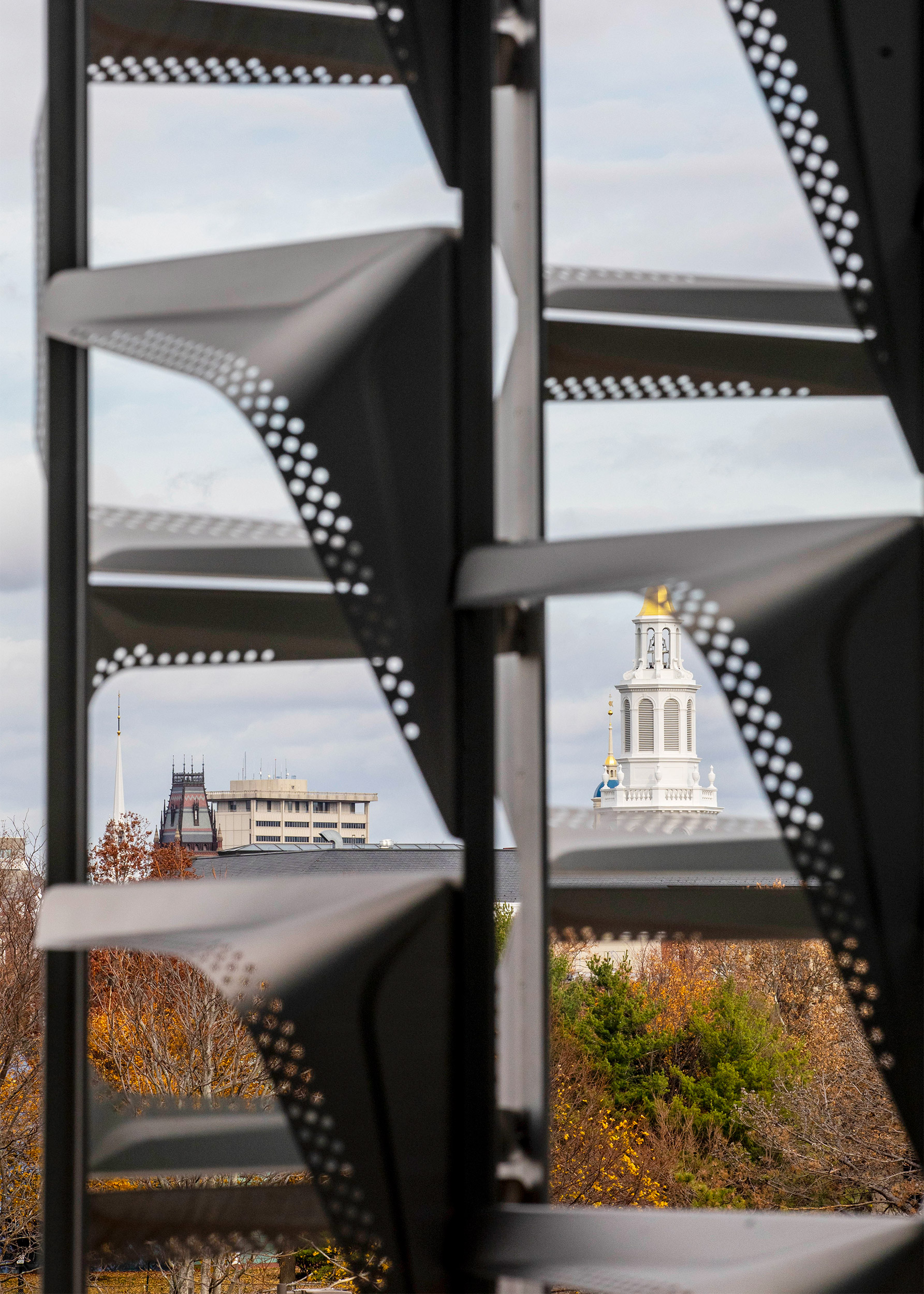
Doyle is cheered by recent positive news about a COVID-19 vaccine and the continued progress against the virus by scientists in an array of fields — including many Harvard and SEAS faculty members — but he advises patience during what will doubtless be a complex process of distributing vaccines.
“We all hope that a successful vaccine and, importantly, a large uptake by the population, will turn the tide on this pandemic,” Doyle said. “We need demonstrated success, both regionally and statewide, before we could hope for relaxation of requirements like reduced density in our lab and office spaces. We stand ready to demonstrate our agility once again as we receive signals — and approvals — to increase our density of operations in the SEC. We have not yet been able to celebrate the opening of this magnificent edifice, but that day will come — hopefully in summer 2021.”


